I’m sitting at the back of what we call the solarcoaster, the front carriage has disappeared over the edge, and it’s weighed down by a tonne of batteries.
As the whole train accelerates, the sales department whoops, the customers giggle and the installers scream. If you are one of these thrill-seekers wanting to take a ride on the federal Cheaper Home Batteries Program before its official start date of July 1, here’s how to do it without losing your lunch.
The solar industry has had more than a few dips and peaks over the years but right now there’s a new precipice, everyone is babbling about a battery incentive, which has no finalised rules, yet.
There’s a lot of confidence about the direction we’re headed. The federal energy minister Chris Bowen, who has championed home batteries, has just been reappointed. His team has been well-engaged with industry to make sure the incentive scheme is properly designed.
But in a bid to avoid a “valley of death” where everyone stops buying batteries before July 1, Bowen himself said when announcing plans for the scheme to “keep going, we’ll make this retrospective”.
This has seen people continue to book battery installations, and plenty of installers advertising prices that include the rebate.
Provided you leave it turned off until the 1st of July, the Cheaper Home Batteries Program (CHBP) claim can be paid in the new financial year.
That’s what the minister said, and there will be hell to pay if he’s not good to his word.
However the first government guidance in writing, released last week, doesn’t mention retrospective eligiblity, although it does provide an idea of which installs would qualify.
The safest course of action is to wait until the rules have been finalised, but if you’re determined to plow on anyway, here’s how to minimise risk of missing out on the rebate entirely.

Energy Minister Chris Bowen has been reappointed, representing continuity for his battery rebate plans.
Approved Batteries And Approved Installers
-
Battery size: It must be between 5 kWh and 100 kWh nominal capacity. The discount only covers the first 50 kWh of usable capacity, so maximum discount is roughly $18,000 in 2025.
-
Installer accreditation: The battery must be installed or supervised onsite by someone accredited by Solar Accreditation Australia (SAA).
-
System must be CEC listed: Battery and inverter must be on the Clean Energy Council’s approved product list.
-
VPP ready : On-grid batteries need to be Virtual Power Plant capable, meaning they can be internet-connected and responsive to a signal. You don’t need to join a VPP, but the hardware needs to be ready.
-
Monitoring: You’ll need a system that reports what it’s doing, and probably one that keeps evidence for compliance.
-
Solar required: No battery-only installs. You must have an existing or new solar PV system to qualify.
-
Modular is fine: Batteries made up of multiple cells/modules are eligible, as long as they act as a single unit.
-
Topping up? If you add capacity to an existing battery, it must be at least 5 kWh, and the total can’t exceed 100 kWh. But—you only get one shot. If your system already got the discount, future upgrades get nothing.
- Battery systems supported under the program can be installed either on or off-grid.
- A battery system connected to a network that gives you a bill – is an on-grid system.
- An off-grid battery system is not connected to an electricity network, defined as being at least one kilometre from a main grid line or where the cost to connect to the grid exceeds $30,000.
- 2025 STC value: 9.3 STCs per usable kWh = ~$372 per kWh but realistically that’s likely $350 once the admin work has been paid for.
- No cars: EVs are excluded, even if they can do V2H or V2G. This is strictly for household energy storage.
Don’t Wire Up The Battery
This is where I think it gets tricky if you’re installing before July 1:
- A battery is considered installed when the Certificate of Electrical Compliance is signed. That means if your sparky signs it off before July 1, you could be ineligible — even if it hasn’t been switched on yet.
- At least one certificate trading portal is recommending that the battery be delivered and mounted in position, but the wiring should not be completed just to be sure.
- Some brands of battery use an integrated solar inverter. The all-in-one design means the battery can’t be separated, so they’re ruled out unless you leave them turned off completely.
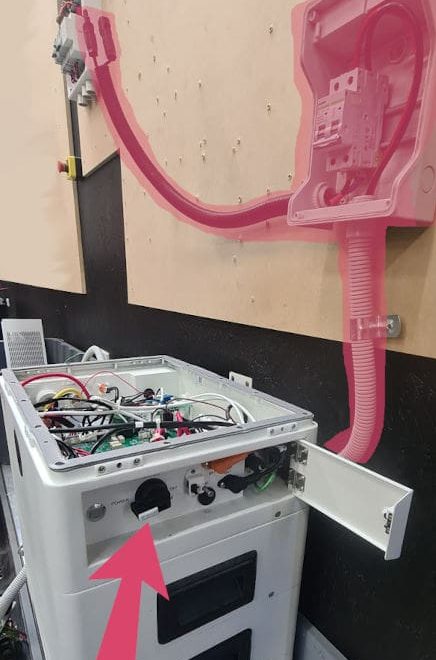
Seen here at Solar Training Center, this Solax unit has a lockable isolator (arrowed). Or the entire DC isolator and wiring could be left out of the install (shaded).
Lock Up Your Batteries
Some particular brands of battery use an integrated solar inverter, an all-in-one design, which has a software lockout that disables the battery until July 1st.
However if the rules are written like Australia’s solar inverter standard AS4777 to include a lockable isolator, then a tangible physical lock might be the only thing accepted.
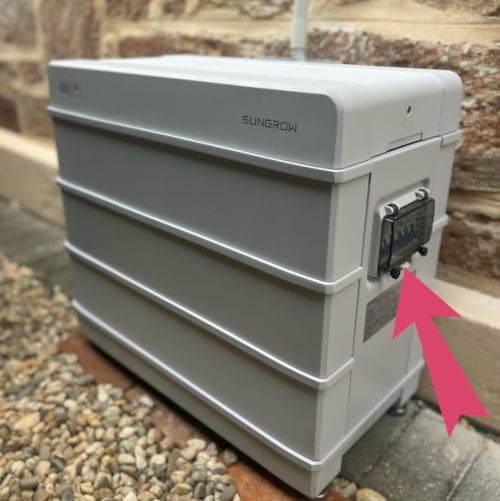
A Sungrow battery with a lockable cover for the battery isolator. Other batteries may have a similar cover. Different designs might have cables you can just leave unplugged.
Geotagged Selfies
If the federal battery rebate has the same requirements as solar PV installations, 3 geotagged photos by your installer must be taken onsite, before, during and after installation.
Apps used by installer record all panel, inverter & battery serial numbers, plus requires selfies of the installer at the start, middle and end of the installation.
In this case your installer might have difficulty producing the evidence, so best practice will be to encourage them to take these photos as they go.
It may not be required in the end, but better safe than sorry.
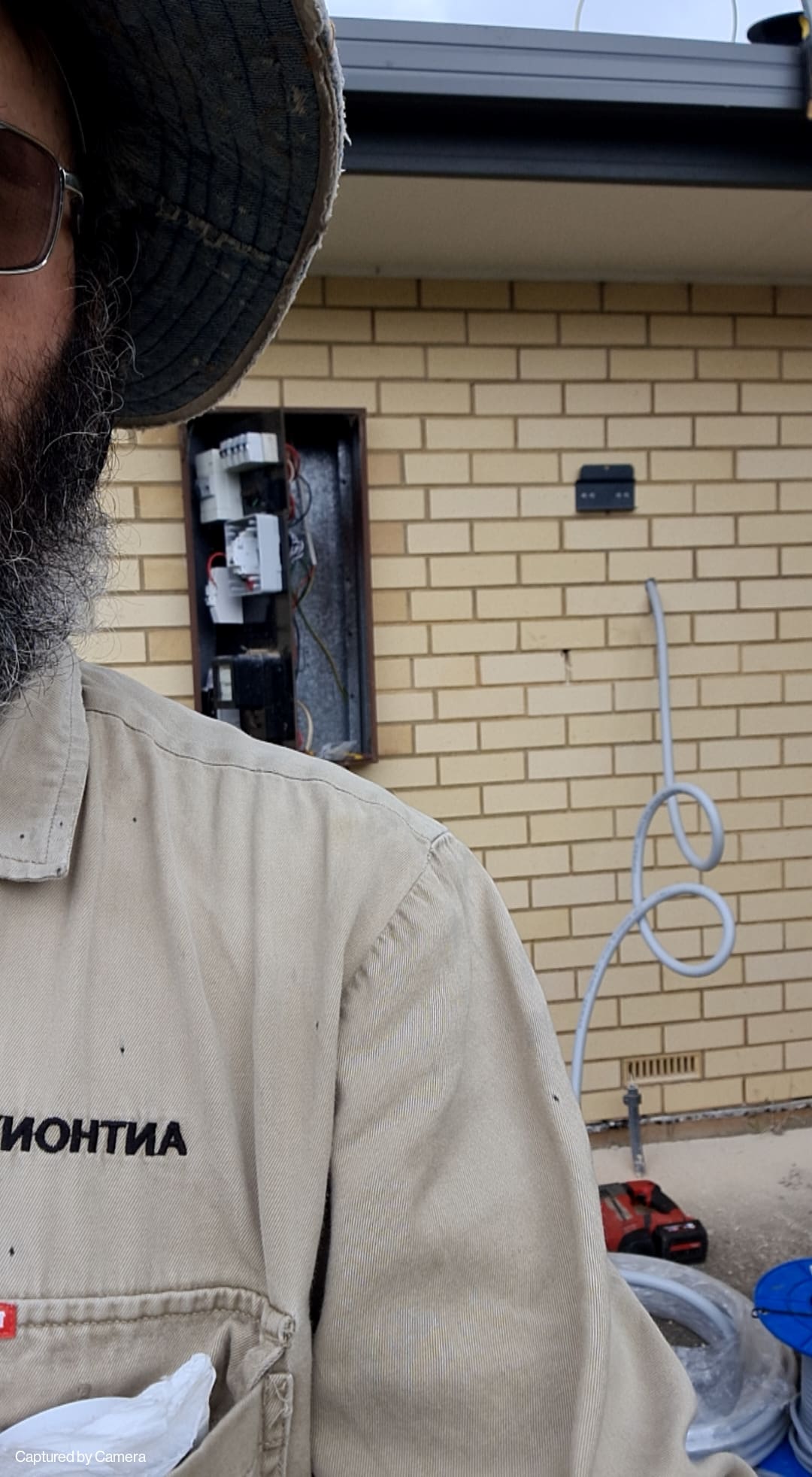
An example of the kind of selfie your installer needs to take as they go about their work.
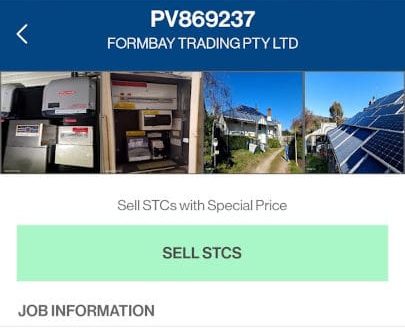
Some of the photos required as part of a solar install.
Scenarios That Are Still Raising Questions
-
If your installer has sold a package with a battery, they’re allowed to include more panels than the typical 133% solar overdrive.
-
However, if they sign an electrical compliance certificate to say the battery is installed, but isn’t functional, the extra solar could be deemed fraud in the eyes of the Clean Energy Regulator.
-
In this instance I’d expect the CER will offer some pragmatism, as AC-coupled batteries have been installed for years while technically being ineligible to create extra solar STCs.
-
Post-July install bottlenecks: if rules say only two installs per day per accredited person, you could be waiting weeks for commissioning.
Not Every Rebate Is Stackable (Yet)
Something I find amazing is that quotes are currently going out to consumers that simply can’t be honoured.
For instance, many people are getting quotes that include both the NSW’s own battery rebate under the Peak Demand Reduction Scheme (PDRS) along with the federal scheme, based on assurances from the feds that their rebate can be stacked with state schemes.
The trouble is, as it stands the PDRS legilation specifically prohibits PDRCs being paid on a battery that’s received a subsidy from elsewhere.
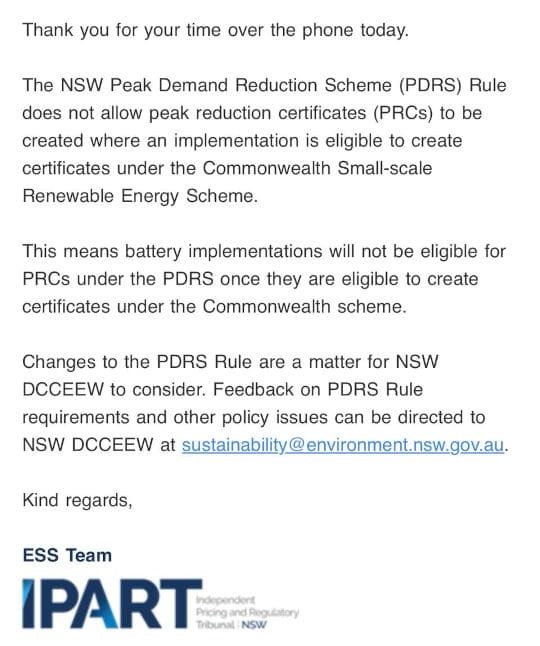
Regulators are currently issuing warnings about the NSW rebate not being stackable with the federal scheme.
As we wrote previously, the PRDS is being modified. SolarQuotes has been involved with feedback to the NSW Government on how and what they should do to make it more functional, but the changes simply haven’t been finalised yet.
Hybrids Make Safe Assumptions
Installing a hybrid inverter now and getting a battery later can guarantee you get the battery incentive. An additional bonus will be some data to base your battery sizing on.
Seeing as the CHBP is only available as a one-off, choosing a battery that’s quite small, or quite large, could be quite disappointing.
By installing solar now and getting monitoring sorted out for the worst months of yield, you’ll have a good idea of what’s appropriate.
Standard Solar Shouldn’t Be Forgotten
If you have large bills and a large roof, more than one inverter can be useful.
While some claim to have 4 input channels, a complex site may need significant spread in capacity and orientation.
Brands like Fronius, Sungrow and GoodWe offer compatibility across their respective ecosystems, so you can have more than one unit on the same monitoring app, playing nicely with an EV charger or hot water controller and even operating the entire system (not just the hybrid) during an outage.
So if you set up with a standard grid connect inverter and consumption meter, planning for a hybrid unit with batteries and more solar (for both inverters) at a later date can make good sense. That way you have maximum capacity with only two tranches of installation.
Murphy’s Law
I really think this program will come good, but like anyone who’s spent time on this fun park ride we call the Solarcoaster, I’m a little gunshy about the esteemed operators behind the shooting gallery.
Some reckon they’re carnival show characters who file down the rifle sights, so you always miss the mark.
However, I’ve seen solar incentives can have unintended targets. When everyone rolls up but they don’t win a prize, frustrated customers can end up putting the showman or his hapless helpers in their sights.
The best approach is to use the next few weeks to get a site visit, make some plans and get the technical details of your install organised. One month’s winter yield isn’t much to miss.
CatchControl can give you insight and integrate into many solar systems as part of the monitoring. You may need to make a special location for the battery. There could be some upgrades needed for a fully electrified switchboard too.
But if you do decide to board the battery solarcoaster early, just make sure to click that safety bar into place.


 RSS - Posts
RSS - Posts


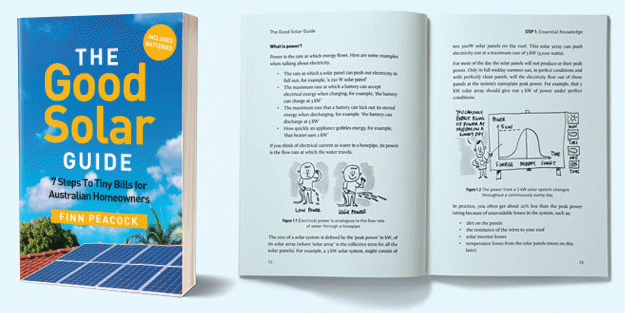
Create your own Virtual Power Plant which will save you via automated grid feed-in https://www.smartmotion.life/
WA aka the wait awhile state has i believe a worse issue, 0 info confirmed on equipment and installers i hope they look to confirm soon with the clock ticking you would think these details would be ironed out with 4 weeks until it starts, i wonder if the WA rebate will have issues regarding stacking the rebate?
Hi DJ,
The WA battery scheme has already become the industry’s worst outcome. There’s thousands of enquiries and no sales on a scheme that’s got a limited life so I think it will be rapidly over subscribed and thus create a lot of bad press for WAGov when people can’t get onto the scheme.
Seeing as the federal scheme is coming, WA should halve the incentive and double the number available.
Whats the rule for existing battery owners with small capacity discontinued batteries? Is federal rebate wont allow them to install new system?
Hi Tess,
We don’t have the rules written in front of us but there should be no barrier to installing more batteries, other than the technical compatibility. You could add another separate system I’m pretty sure, just so long as it plays nicely in an electrical sense.
I ordered a battery and hybrid inverter to add to my solar system last week, but requested them not to install it before July.
It takes weeks to get all the paper work done and approval from Ergon anyway so it should all work out OK.
At least now I have the battery/inverter upgrade in motion the installer should have the gear ready to go with in July which could be important if there is a huge run on battery installations and supply delays ensue.
Not looking too good for those of us who completed the install before all of the “don’t complete the install” information became available.
Would have been pretty easy for them to release that information before the election instead of saying it’s ok to continue the install just don’t turn it on.
Would be good if they could use the inverter data to confirm that the battery wasn’t used. The Sungrow cloud app has all of the data that shows the battery was only switched on when the installers were around and then off for the rest of the time.
Guess it wouldn’t work for every combination out there though.
I was contacted with a hard to refuse deal and pressured to sign straight away. $4000 for a fully installed Alpha ESS battery and additional battery total 26.6kw/h. I was told to take advantage of the offer and NSW rebates before they end/change in June. Should I forgo my $300 deposit and wait for the Federal rebates and scheme? I’m confused about all this and what rebates and batteries are a good deal?
Hi Grant,
Do you ahve 10 days cooling off mentioned in your contract? In my experience the hard sell is never something good.
It wasn’t necessarily a hard sell rather a deal that couldn’t be refused. I’m in the same situation with the uncertainty over the whether I will get both rebates. I paid a $500 deposit, scheduled install next Friday. Perhaps I should delay the install. Installer is still confident of both but I will be the one footing the bill if it doesn’t go ahead.
I had a quote for a 19.3kWh BYD HVM battery earlier this year before the new scheme was announced, about $18k installed. I turned it down. The installer called me back a month ago and said with the new scheme it was now $10,800, so I signed up and it was installed yesterday, to be commissioned July 1. I’ve paid in full.
What if something changes in the rules that affects that ~$7k discount, is the installer going to be chasing me for more money? FWIW this is a highly rated installer in Melbourne that I found via Solar quotes, not some popup cowboy company.
Hi David,
If you’ve got a contract and they’ve given you the discount up front then I expect the installer is wearing the risk. We’ll know soon enough but assuming you’ve paid a bill in full then they have no comeback as far as I’m aware.
Some installers have been asking for full tote odds and then offering cashback after July 1. In that case the customer is taking the risk.
Hello Anthony
A very interesting article. I currently sit on the off grid side of things. We went off grid for our new build about 9 years ago. At the time single phase grid to the pit was about 20k and 3 phase about 40k. Our current lead AGM battery’s are really starting to struggle in performance but I don’t think the nearest power line is over one km away so will this scheme work for us?
Thank you, Chris